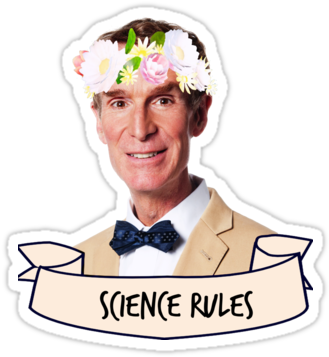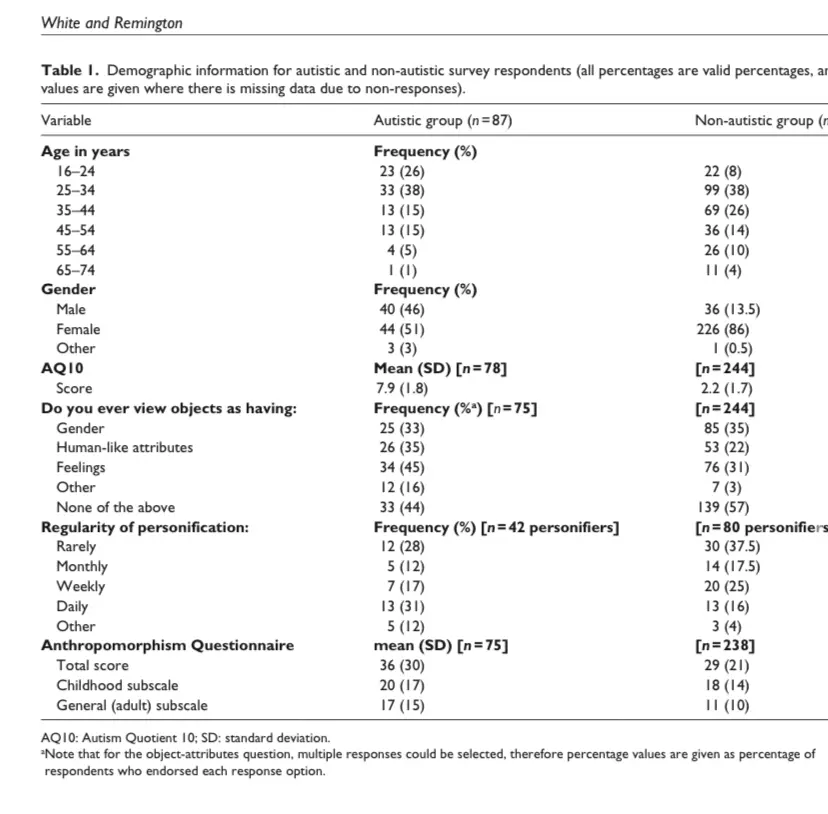lemme guess, this paper is probably pay walled also?
God i love modern science, it's so much fun.
A place for majestic STEMLORD peacocking, as well as memes about the realities of working in a lab.

Rules
This is a science community. We use the Dawkins definition of meme.
lemme guess, this paper is probably pay walled also?
God i love modern science, it's so much fun.
Gotta say this is one ASD trait that I very much don't have and is kind of hard to relate to.
Mother fucker....
I personified numbers all the time, 8 and 9 were based off of Smithers and Burns, 4 and 7 were female 4 was more the girl next door, and 7 was more the "Good bad girl"
Can someone explain like I'm 5?
"This paper will be very sad if you don't read it."
Implying that if you read the paper to avoid making it sad you are autistic.
So it's just one more bad autism joke
ok shitpost time.
Technically the paper is about the personification of objects in relation to autism.
If you do not read the paper it will be sad. Since it's the paper being sad, and not you thinking that the paper will be sad, technically we could argue that the paper is just lonely and wants somebody to talk to.
You're personifying the paper by assuming that it can feel an emotion
A lot of people with autism feel bad when you hurt an objects feelings, which contradicts the traditional "autism is when no empathy" narrative.
Thank you for explaining, I understand now. :)
Scientific papers are often titled "What it's actually about: something witty." This one is about object personification and so after the colon they personify the paper itself by giving it an emotion.
Thanks for your response, I appreciate it! That makes sense.
When I was a kid, every letter and number seemed to have a gender to me.
Don’t anthropomorphize computers, they hate that.
So Brave Little Toaster's writer probably was ASD?
A writer whom Kirby scarred somehow
I hope i don't make the paper sad by saying this but the numbers are kinda off. (Or i misunderstand)
The only real difference is for below age 24. Then its pretty much the same if not less prevalent for autists.
They point to some other factors about the types of questions that indicate that the differences are underestimated but evidently that didn’t translate in hard numbers.

As doctor whatshisorherface said, the first percentage is just showing participant age group, as both lists add up to 100%.
The actual results are in the text. 56% personifiers among autists vs 33% among not autists, p<0.05. Self report is p=0.06.
I think you are misreading this. The age sections at the top are just a demographic breakdown of the two groups. Note rhat all the different percentages for age sum to 100. The results are just the bottom section of your screenshot ("anthromorphic questionnaire"). Does seem to be statistically significant.
I'm pretty sure the age and gender in that table is just showing the frequency of the ages in the sample, not a crosstab of age or gender with personification/anthropomorphism.
So that's saying their autistic population skewed younger than their non-autistic population. Which isn't unsurprising, it's a lot easier to get a diagnosis as a child, and generally easier to get diagnosed now compared to a few decades ago. So people over 35 or so are going to just be less likely to have had the opportunity for diagnosis. The authors do address differences in gender representation between the samples but I don't see age addressed specifically. It could just be that younger people tend to personify/anthropomorphize more, so since the sample of people with autism skewed pretty heavily towards the 16-24 group the results could instead be displaying differences by age. I don't think they quite have the sample size to delve into age too much. I think they'd only be able to get away with doing two groups at 34 & under and 35+. That would be a good start though.
This is also a heavily self-selected population, apparently largely from social media. I'm always automatically skeptical of social media sampling.
I would've liked to see a little more detail about exactly which tests and assumptions they were using. The gender difference looks like they did a t-test, but it's left to the reader to assume they ran a two-tailed t-test. They could easily have bolstered their numbers by reporting the one-tailed test.
Clickbait for autistic people
I had to grit my teeth to restrain myself from looking this up
I misread autism as one of the coauthors, so
Albert "Al" Autism. Most famous scientist in his field
As a child I would hide newspapers under the couch so my mommy wouldn't use them in the fireplace.
My dad had to mow the lawn when I was away or heavily distracted because I'd cry about the dandelions and daisies being cut down lol
Still irks me to this day when I have to do it.
It's the opposite for me. As a child, I had an irrational fear of dandelions. When my dad had to mown the lawn, I cheered from the window, as I could finally go outside again.
Given the climate collapse I figure we'll both lead lives that will eventually lead us to Highlander-Dueling it out over the last dandelion and what to do with it
Oh no the poor newspapers
This comment will be very sad if you don't interact with it
Downvoting so comment is happy
I'm confused, but happy.
Goddammit you got me
Anyone got a link to the paper? I kinda want to read it
I hear sci hub is a pretty cool website that lets you find a paper by its doi number
The DOI number is nowhere in this post so 🤷
I hear there's another neat website called google that lets you find the doi of a paper by its title
thanks, the paper won't be sad anymore!
I object.
Well now I've gone and personified you. Hallo, object!
I object.